Table of Contents
ToggleOne of the most magnificent structures on the Bosphorus Strait, Dolmabahçe Palace is one of the most striking examples of architecture from the Ottoman Empire’s Westernization period. Built in the mid-19th century, this enchanting palace has become a favorite destination for both local and international tourists, thanks to its architecture and historical significance.
Dolmabahçe Palace Istanbul is located in the Beşiktaş district and symbolizes the transition from traditional Ottoman architecture to Western-style splendor. With details that rival European palaces, the structure holds a special place not only in Ottoman history but also in the cultural richness of Istanbul. Offering visitors a fascinating journey through time, this palace with a view of the Bosphorus is a unique stop for history buffs.
History and Architecture of Dolmabahçe Palace
Dolmabahçe Palace is one of the most important buildings constructed during the modernization process of the Ottoman Empire. Commissioned by Sultan Abdülmecid in 1856, the palace is a rare example of Western-style architecture blending with Ottoman palace tradition. Dolmabahçe Palace, which is located on the European side of the Bosphorus, features a rich combination of Baroque, Rococo, and Neoclassical elements.
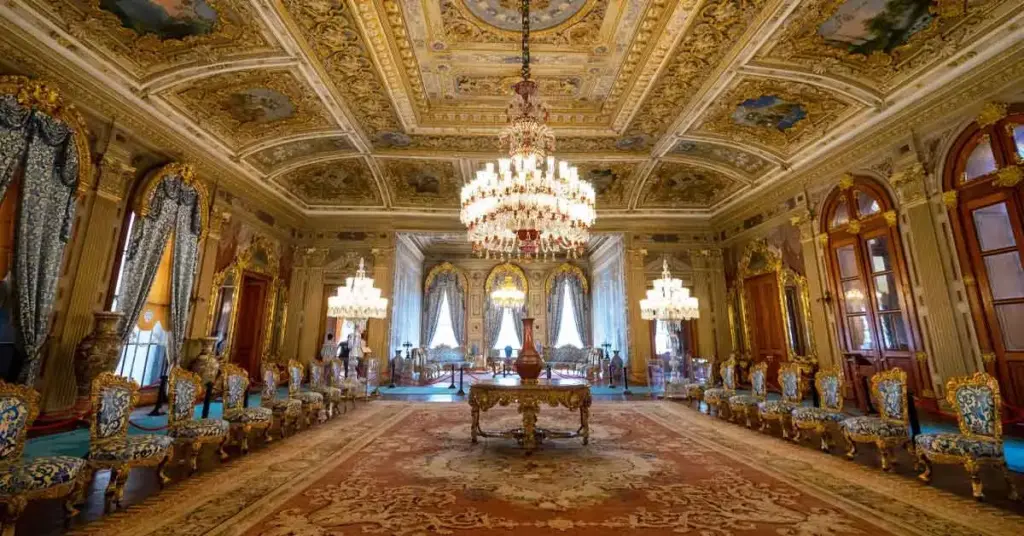
Inspired by French and Italian architects, the palace boasts dazzling grandeur with its exterior decorations, gold-leafed details in the interior, and crystal chandeliers. With 285 rooms, 46 halls, and a magnificent ceremonial hall, this structure was the most modern palace of its time and a concrete manifestation of the Ottoman Empire’s vision of Westernization.
Notable Details:
- Ceilings and walls decorated with 14 tons of gold
- Baroque and Rococo architectural decorations
- World-famous crystal chandelier weighing 4.5 tons
- Influences of French and Italian architects
- Symbolic structure with a view of the Bosphorus
The Rich Interior Decoration of Dolmabahçe Palace
The interiors of Dolmabahçe Palace are so rich that they transport visitors to another world. Furnished with furniture, carpets, chandeliers, and paintings brought specially from Europe, the palace reflects the Ottoman Empire’s opening to the West not only through its architecture but also through its lifestyle.
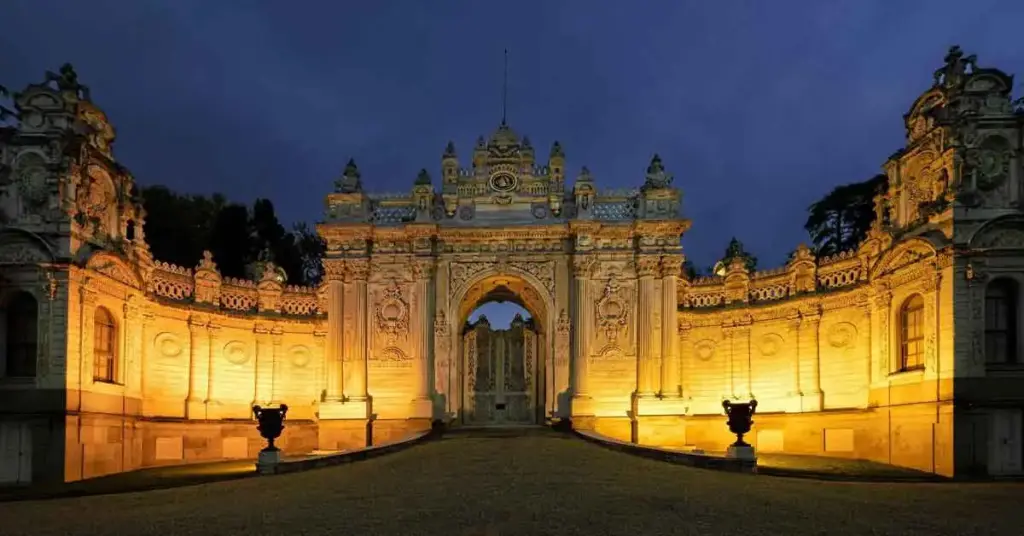
The Ceremonial Hall, in particular, dazzles with its 36-meter-high dome and massive crystal chandelier. Each room has a different theme, inspired by contemporary palaces in Europe. The interior spaces of the palace combine Ottoman luxury with Western aesthetics to create a unique atmosphere.
Interior Features:
- Different European styles (Neoclassical, Baroque, etc.) in each room
- Crystal and furniture imported from England and France
- Hand-woven Hereke carpets
- Gold-leafed mirrors and wall decorations
- Walls enriched with historical paintings
Where is Dolmabahçe Palace and How to Get There?
Dolmabahçe Palace is located in the Beşiktaş district of Istanbul, on the shores of the Bosphorus. Thanks to its proximity to the city center, it is very easy to reach. You can get to the palace by public transportation, sea, or on foot. It can be reached in a short time from central locations such as Taksim, Kabataş, and Beşiktaş.
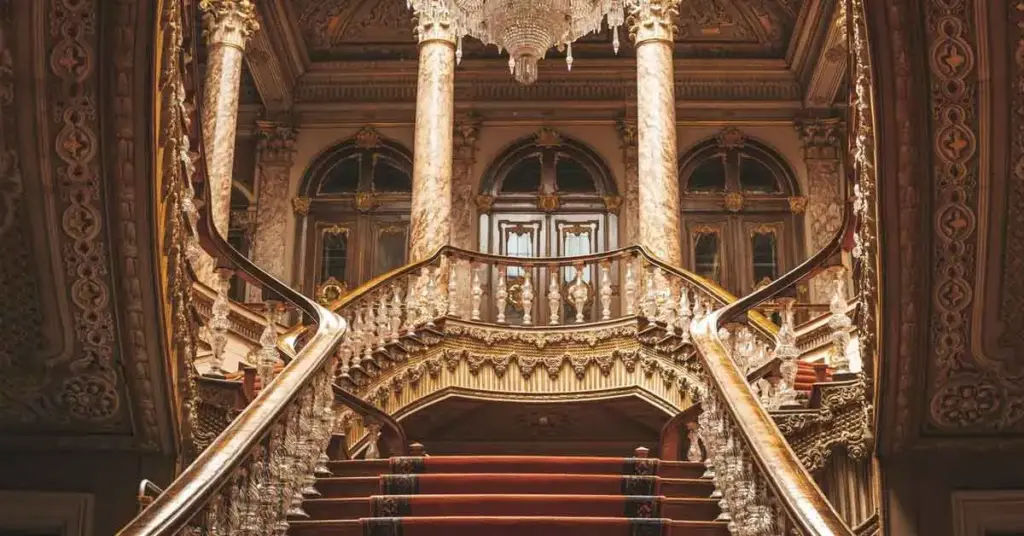
Dolmabahçe Palace is open to visitors on certain days of the week and can be explored with guided tours. It is important to pay attention to the opening hours, as the interior tour is only available at specific times.
Transportation Options:
- 10-minute walk from Kabataş
- F1 funicular line from Taksim to Kabataş
- Take the city ferry to Beşiktaş Pier
- Private tour buses and guided group tours
- There is a visitor parking lot at the palace.
The Significance of Dolmabahçe Palace for the Ottomans
Unlike the traditional Topkapı Palace, Dolmabahçe Palace became a symbol of the Ottomans’ opening to the West.
The sultans who lived here began to host not only the palace staff but also European ambassadors and state officials, which led to the palace becoming a diplomatic center. In addition, six sultans lived here during the Ottoman Empire’s final period, and Atatürk spent his last days in this palace. For this reason, it is of great importance not only architecturally but also politically and historically.
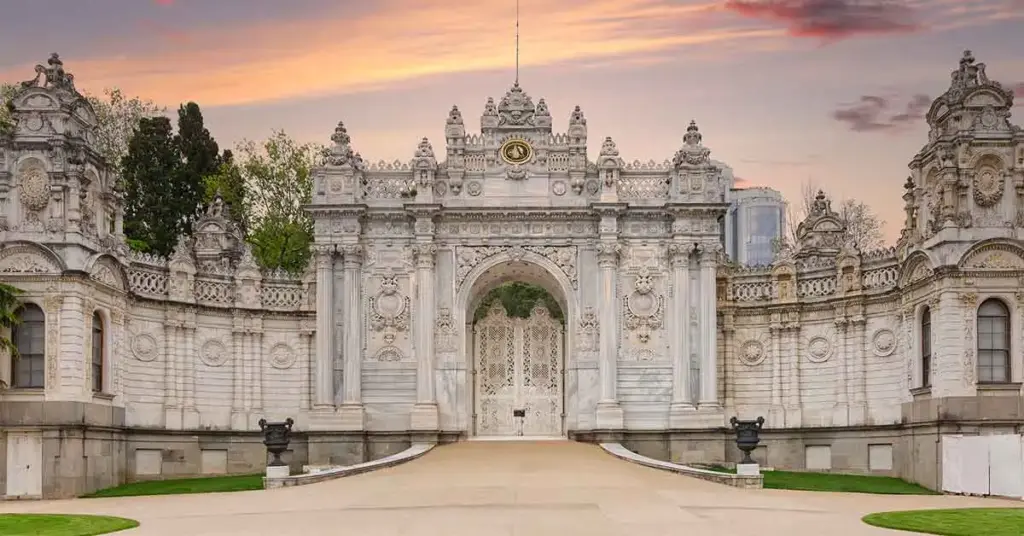
Historical Importance:
- The first palace built during the Ottoman Empire’s Westernization process
- Center for diplomatic meetings and receptions
- Residence of the last Ottoman sultans
- Place where Atatürk passed away in 1938
- Serving as a museum during the Republican era
Things to Keep in Mind When Visiting Dolmabahçe Palace
When visiting Dolmabahçe Palace, it is important to follow certain rules to ensure that the experience is both productive and respectful. Photography is not permitted in some areas of the palace. Additionally, touching certain areas is prohibited to preserve the historical fabric.
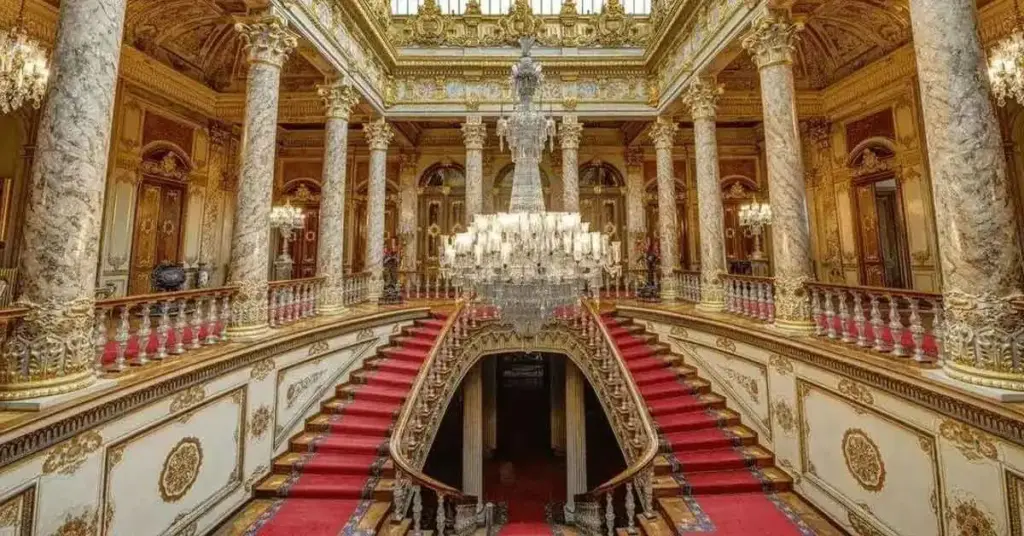
Visiting hours and days may vary, so please check the official website for the most up-to-date information. Tickets can be purchased at the ticket office or reserved in advance through online systems.
Visitor Information:
- Visiting hours are generally between 09:00 and 17:00
- Closed on Mondays
- Guided tours are available
- Museum cards are not valid; separate tickets are required
- The Ceremonial Hall and Harem section require separate tickets

